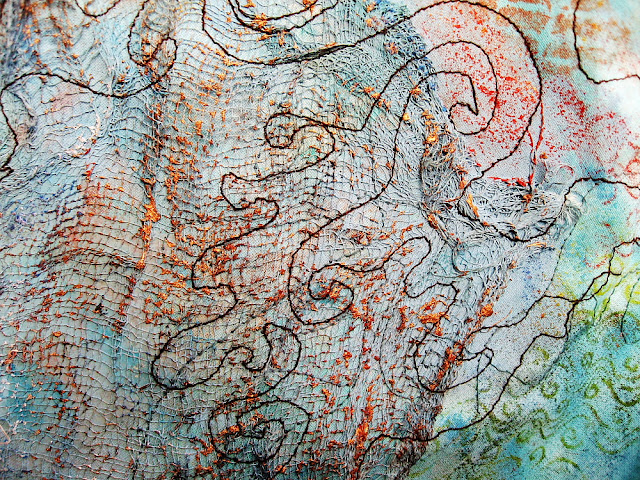Original fabric for textile art ... an article 'Surfaces for Stitch " by Pauline Verrinder in the February/March edition of Quilting Arts Magazine caught my eye. It reads " Scrim or cheesecloth - is an inexpensive woven cotton that is both open and loose. It has many uses around the house : cleaning windows, straining cooking ingredients, and as a bandage. But for textile artists, it is the perfect material for creating richly decorated art cloth...." So, with some cotton fabric, gesso, paint, pastels, pencils, newspaper headlines and cheesecloth ... this is what I got :
I also applied the same technique to a cloth doll body - inspired by the ocean and shipwrecks. (The100th anniversary of te Titanic sinking is next month )
So enough of playing around with paint... back to some naked bodies desperately waiting to be embellished into some message stick art dolls. I wonder what the person who ordered these would think if he saw them like this?





I really like your art fabric. I use dyed cheese cloth, but you have added another or rather more depths to it. Must go play some more!
ReplyDelete